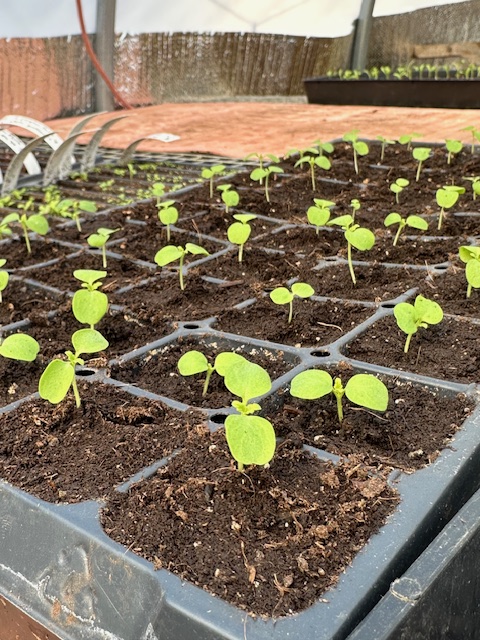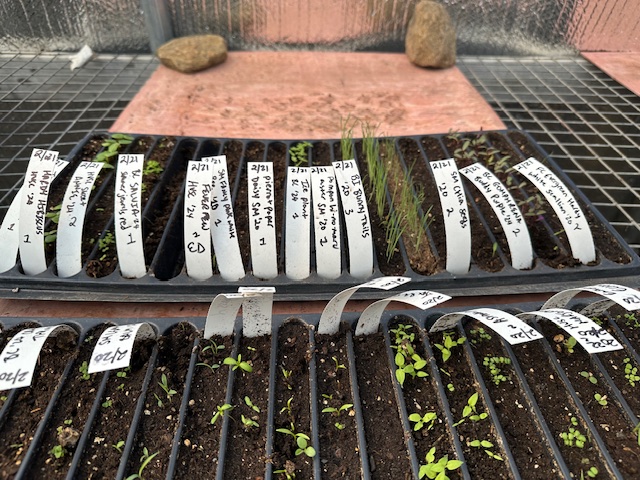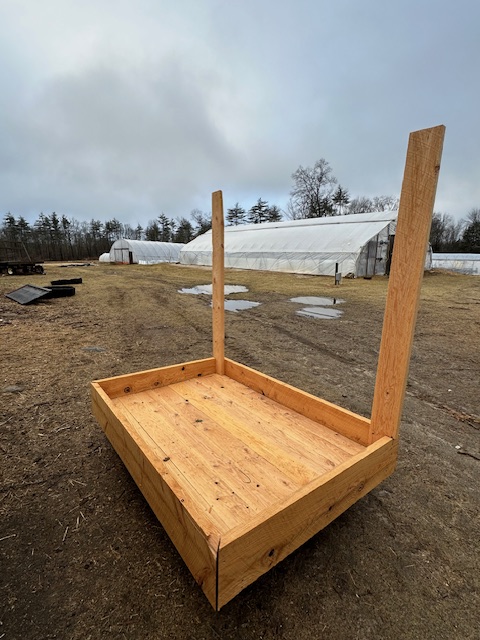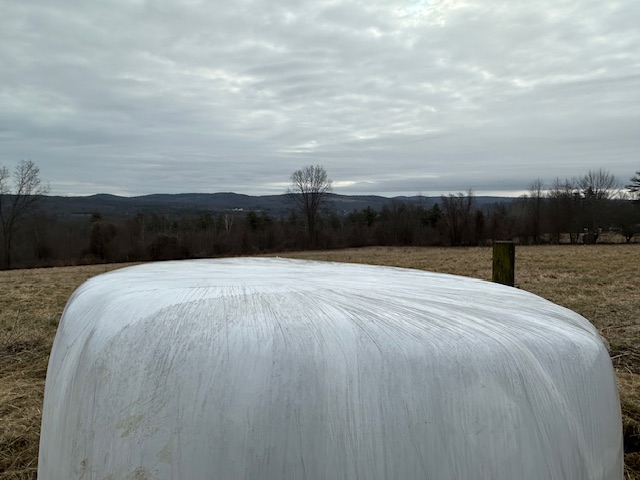The heat was turned on in the greenhouse this week, and the tables in there are starting to gradually fill up with the first real seed starts of the season. We did a little watering and seedling care refresher with the PVS staff in that space on Friday afternoon, so it seems like the seeding season is really getting started. A regular schedule of seeding, development and planting will start to take hold of that work as we use that warm enclosure to advance the season and give plants a well supported start to life before they move out to the fields. The warm greenhouse was a nice place to be this week as some classic strong and wild late winter weather passed over the farm. A big storm and weather front passed over the farm Wednesday afternoon, and Thursday was a bitter cold and windy day. The power was knocked out for a few hours overnight Wednesday into Thursday, and we were all looking for indoor heated spaces to work Thursday as the wind blew everything around the farm. Wood-stoves around the farm burned hot as the powerful wind created some amazing draw at every smoke-stack. Conditions moderated by Friday, and the ten-day forecast looks pretty wet and mild.
The wild weather, and the warm conditions that dominate most of our ten-day forecast, have not been great for sugaring and sap flow, but we did collect 175 gallons of sap this week and boil down a bit of syrup. It was wonderful to see the steam coming out of the sugar-shack vents, and the kids on the farm really enjoyed tasting the syrup as it moved from sap to the finished product. The sugar-shack is a wonderful place to spend a nasty early spring day, and with just the right bit of work to attend to, a warm cozy fire, a wonderful smell and a delicious product to sample, it is always a popular place to be when the arch and the pan are going. The forecast does not look great for the future of our season, but if the trees and the sap can hold on through what appears to be six or seven days of pretty warm conditions, I expect that temperatures should come back down to a more conducive range before true spring arrives.
Construction began this week on a new wooden dry bale feeder for the dairy herd, modeled on the very successful one that we use for the beef herd. This will be a smaller unit to reflect the smaller cows and smaller herd at the dairy, but it will reflect the same design. Above will be a pitched metal roof, and below is a wooden tray with ten inch sides to hold the hay. Between the roof and tray are vertical wood posts, spaced and oriented so that cows can reach their head between them to access the hay but not climb in. This should allow us to put quite a few bales of hay inside the feeder, and the cows will surround it to eat with their heads inside. This design has been great for the beef herd, with some adaptations and changes depending on calves climbing through the bars and resting on the hay. We made some great progress on the new feeder this week, and I would like to get it done soon since our hay supply is pretty square bale heavy at this point.
We separated and moved the two dairy steers that had been with the herd this winter, and they have been installed in the calf pen down at the beef barn. They’ll get a couple of weeks to get used to eating hay and forgetting about nursing before we release them to join the beef herd. Once released, these steers will face a period of trial when they have to try to find their way to accessing the hay feeders and avoiding the big beef cows, and we’ll do what we can to support them, sneak them their own hay supplies, and encourage them until we’re confident that they can survive and thrive. For now, they have their own space, their own hay and water, and a twice daily grain ration to keep them well fed. #11 has been jumping the panels of his enclosure to join the beef herd, but we have put him back in every time and tried to remind him that life on the inside will be much easier for now than the rough and tumble of the main herd. Dr. Ledoux came out to the farm this week to check dairy cow pregnancies, and he found that every cow we wanted bred, with the exception of Penelope, is carrying a baby. This was great news for the next round of calving and milk production, and Penelope was even obliging enough to come into heat Sunday morning too. An early March breeding will mean a December baby, and while this isn’t our favorite, it seems like we’ll probably go ahead and try to get her bred. We are looking forward to two calves due at the end of March.



